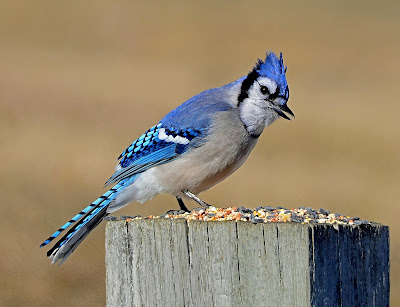Cedar Apple Rust
Nature News: Cedar apple rust an interesting fungus
Published June 18 2019 seacoastonline.com/Fosters Daily/Portsmouth Herald etc
 |
| Cedar apple rust is a fungus that requires two hosts to grow photo by Dave Betournay |
I was recently sent a photo of what looked like some sort of alien growth on a cedar tree, described by the proud owner of this tree as gelatinous tree anemones. This is an apt description as they do resemble arboreal sea anemones and is a much more interesting descriptor than ‘cedar apple rust’. While these definitely aren’t aliens they are in that category of life that often takes on bizarre forms-the fungi.
The USDA describes this fungus as follows in their ‘Plant of the Week’ blog (though these aren’t plants, they do infect plants) “Cedar apple rust is a member of the family Pucciniaceae, a group of fungi that contains many species that usually require two or more hosts to complete the life cycle. Members of this family are known as rusts because the color of many is orange or reddish at some point in the life cycle. Many rusts are disease agents of crop plants including black stem rust of wheat, soybean rust and white pine blister rust. From three to five different spore types are produced by rusts, but one is always a basidiospore. These spores are produced on structures called basidia place the family is in the Basidiomycota, a large group that includes many common mushrooms. Large infestations of this rust can reduce yield on apples, blemish the fruit, and lead to weakening and death of red cedar.”
One of the interesting tidbits mentioned in the USDA description involves the multiple hosts required for the life cycle of this fungi. As its name implies cedar apple rust needs both a cedar-type tree (junipers also will work) and an apple-type tree (depending on the exact variety of rust, apples, crabapples and other members of the rose family are susceptible). So, if you find these on a neighborhood cedar tree chances are there are apples or crabapples close by.
Another really interesting but really complicated tidbit has to do with the multiple spore types. Spores are how fungi reproduce (sperm and eggs hadn’t been invented yet when fungi first showed up on planet Earth). You need to know about the different spore types to understand the two-host life cycle of cedar apple rust.
Cedar apple rust produces four types of spores: teliospores, basidiospores, spermatia (which aren’t really spores) and aeciospores. Cedars infected with cedar apple rust form golf ball-size on their branches usually within 7 months to a year following infection. Following rainy spring weather (ours has been an ideal spring) telial horns emerge from the golf ball, when the horns absorb water they swell up and become jelly-like. These gelatinous horns release teliospores that stay put and germinate to form basidia which produce basidiospores that are forcibly discharged into the air. If a basidiospore lands on a wet apple tree (a thin film of water needs to be present) the basidiospore will germinate. A couple weeks later orange spots appear on the leaf or fruit, the orange spots produce spermatia. The spermatia is in a sticky liquid that attracts a wide variety of insects that carry the spermatia about allowing fertilization to take place-this is the sexual phase of the cedar apple rust life cycle. Everything else has been asexual up to this point. The fungus formed following fertilization grows through the leaf and produces aecia on the underside of the leaf. The aecia produce aeciospores that get blown by the wind back to the cedar, infect the cedar, which starts to form galls that, in the following year, will produce telial horns and start the cycle all over again. What this intricate life cycle means is that cedars can’t infect cedars, they can only infect apples and apples can only infect cedars-the cedar apple rust really needs both trees.
How bad is cedar apple rust for your trees? It appears to depend upon who you listen to. The USDA recommends controlling infections because large infestations of this rust can kill cedar trees, broad application of fungicide is required for this (not a good thing if you are a helpful fungi living in the area). Other experts, like the Missouri Botanical Garden recommend just living with this infection in your trees, that it rarely kills them. To minimize outbreaks they suggest pruning to increase ventilation since wetness is required for key parts of the life cycle.
While I suppose I wouldn’t want a huge infestation in my backyard, I have to say that I really like cedar apple rust, primarily because it is so weird looking. How can you not love something that can be described as a gelatinous tree anemone?



Comments
Post a Comment